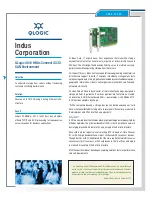
Mode
The configuration mode of the link aggregate or failover group. Your choice will be determined
by the capabilities of the link partner (for example, switch, router, or server) to which the link
aggregate physical interfaces will be connected. See your link partner's documentation to
determine which modes it supports. Check the mode you want to use. The following choices are
available:
FEC_AUTO
Automatically start the FEC protocol on the physical port.
LACP_AUTO
Automatically start LACP on the physical port.
MANUAL
HP APA does not automatically aggregate ports. You must manually add or
remove ports from a link aggregate.
LAN_MONITOR The ports are used for a
failover group
.
Not_Enabled
Create the link aggregate with the Key, Group Capability, or Load Distribution
Algorithm set to a non-default value, but without any ports. You must add
ports to enable it.
Failover Policy
The mechanism by which LAN Monitor chooses the active port in a
failover group
. The following
choices are available:
Priority Based
If the active port fails, LAN Monitor chooses the standby link that is UP
and that has the highest
port priority
(highest value) to be the new active
link.
Cost Based
If the active port fails, LAN Monitor chooses the standby link that is UP
and has the lowest normalized port cost to be the new active link. This is
also called proactive failover. See
“Proactive failover” (page 11)
for a
description of proactive failover and
“Proactive failover examples”
(page 102)
for proactive failover examples.
Check the failover policy you want to use.
Instance Number
The PPA numbers of the ports to include in the link aggregation or failover group. Enter the
numbers on the sheet.
NOTE:
Before adding ports to a failover group, you must check link connectivity between the
ports.
HW Path
The hardware path to the NIC associated with the port to include in the link aggregate or failover
group. A numeric string of hardware components, noted sequentially from the bus address to
the device address.
For link aggregates, this is a string in the form
LinkAggxx
, where
xx
is the last two digits of the
instance number (00 – 49).
This field is provided as a convenience in case you either do not know the PPA number of the
port or want a place to capture and save both values.
Interface Type
A short description of the NIC associated with the port. For example, 100Base-TX.
Preparing for configuration
31
















































